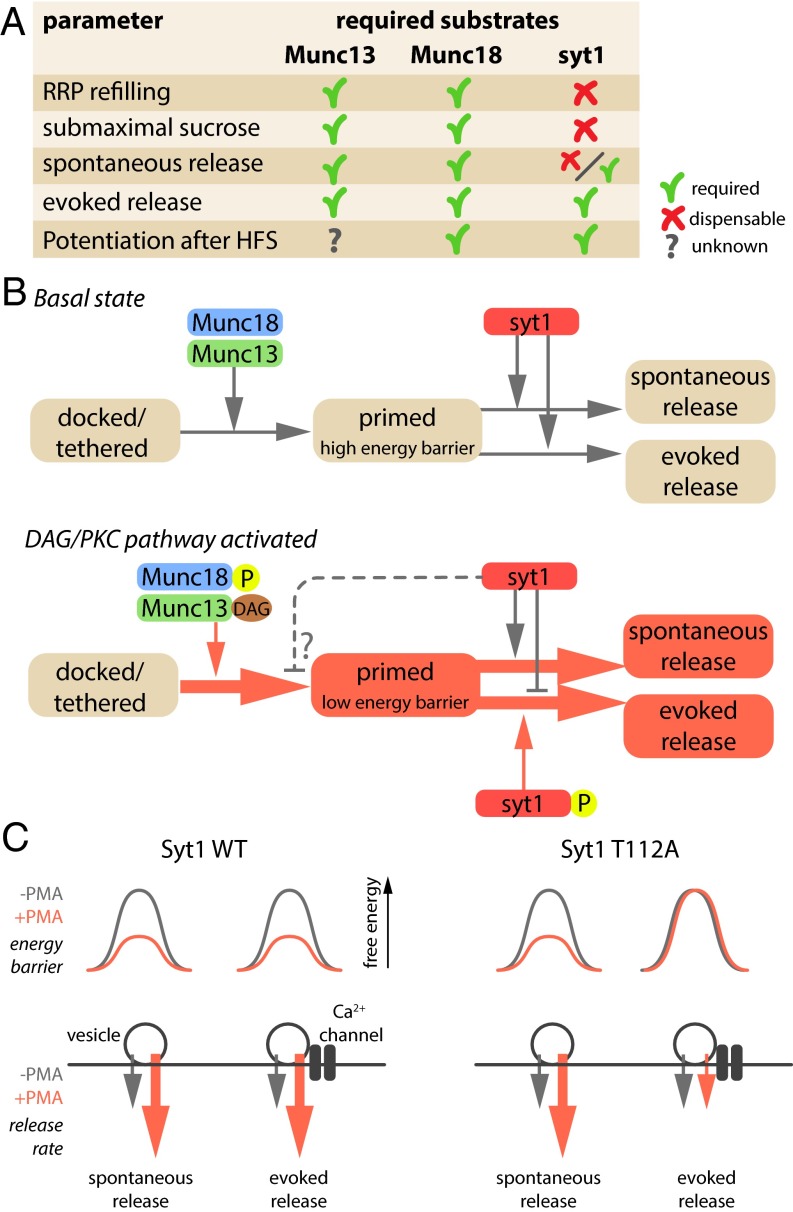Fig. 4.
Working model for DAG/PKC-induced potentiation of vesicle fusion. (A) Overview of synaptic parameters potentiated by the DAG/PKC pathway and the required substrates for each parameter. Syt1 data are derived from the current study; Munc18-1 data from refs. 8 and 12; and Munc13 data from refs. 9–11. (B) Proposed working model for DAG/PKC-induced potentiation. Activation of Munc13-1 and Munc18-1 potentiates vesicle priming while lowering the fusion barrier, making vesicles more fusogenic (red color box) compared with the basal state. Syt1 appears to inhibit the AP-induced evoked release, but not spontaneous release, of these highly fusogenic vesicles or may even prevent the increase in fusogenicity of specific vesicles used in AP-induced release (dashed line). (C) Working model to explain the fact that AP-induced release is not potentiated by DAG in synapses expressing SytT112A, whereas the overall fusogenicity of vesicles is increased by DAG. A subset of vesicles, preferentially used by AP-induced release may be exempt from potentiation and have a normal energy barrier, despite the fact that DAG has lowered the barrier for most vesicles. In this hypothetical model, Syt1 would also influence priming (dashed line in B).

